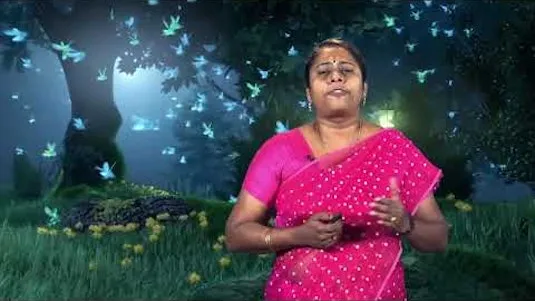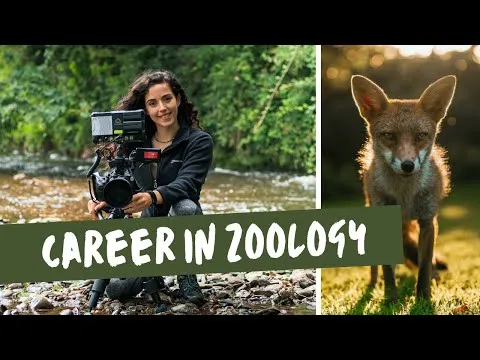
Introduction to Wildlife Conservation 
Discover the fascinating world of wildlife conservation in this engaging course! Learn about the crucial practice of protecting animal species and their habitats, and understand the importance of maintaining biodiversity. Explore the economic valuation of biodiversity and discover how to estimate species loss and factors driving extinction. Dive into population viability analysis and gain insights into climate change and its impacts on wildlife. Uncover the devastating effects of plastics and oil spills on ecosystems. With real-life case studies, including the Sariska Tiger Reserve in India, this course is perfect for ecology enthusiasts seeking practical solutions to conservation challenges. Join now and make a difference! ▼
ADVERTISEMENT
Course Feature
![]() Cost:
Cost:
Free
![]() Provider:
Provider:
Alison
![]() Certificate:
Certificate:
No Information
![]() Language:
Language:
English
Course Overview
❗The content presented here is sourced directly from Alison platform. For comprehensive course details, including enrollment information, simply click on the 'Go to class' link on our website.
Updated in [September 15th, 2023]
What does this course tell?
(Please note that the following overview content is from the original platform)
In this course, you will be introduced to the essential concepts of wildlife conservation. You will learn about the practice of protecting animal species and their habitats, which will lead to the importance of maintaining biodiversity. Also, you will be shown how thriving wildlife populations provide balance and maintain stability to nature’s processes.
Then, the course will introduce you to the economic valuation of biodiversity and the different methods of this valuation. You will be shown how you can estimate the rate of species loss, the factors driving species towards extinction and why some species become much more susceptible to extinction than others. Furthermore, you will learn about population viability analysis and why there is a need for such an analysis.
This course also explores the management of change. You will learn about climate change, ‘forcings’ and different responses to it. After this, delve into ‘mitigation’ and ‘adaptation’ before moving onto the devastating impacts of plastics and oil spills on wildlife and their ecosystems. Finally, you will be shown crisis situations using the Sariska Tiger Reserve in India as a case study. This course is important for learners who want to develop their knowledge of ecology and apply this knowledge to develop practical solutions to conservation problems and conservation practice.
We consider the value of this course from multiple aspects, and finally summarize it for you from three aspects: personal skills, career development, and further study:
(Kindly be aware that our content is optimized by AI tools while also undergoing moderation carefully from our editorial staff.)
What skills and knowledge will you acquire during this course?
During this course, the learner will acquire a range of skills and knowledge related to wildlife conservation. They will gain an understanding of the fundamental concepts and principles of protecting animal species and their habitats. This includes learning about the importance of maintaining biodiversity and how thriving wildlife populations contribute to the balance and stability of nature's processes.
The course will also cover the economic valuation of biodiversity, teaching the learner different methods for assessing its value. They will learn how to estimate the rate of species loss and understand the factors that drive species towards extinction. Additionally, they will explore why certain species are more susceptible to extinction than others. The learner will also be introduced to population viability analysis and its significance in conservation efforts.
Furthermore, the course will delve into the management of change, specifically focusing on climate change and its various impacts. The learner will gain knowledge about the different responses to climate change, including mitigation and adaptation strategies. They will also learn about the detrimental effects of plastics and oil spills on wildlife and their ecosystems.
Lastly, the course will present crisis situations using the Sariska Tiger Reserve in India as a case study. This will provide the learner with practical examples of conservation problems and the application of ecological knowledge to develop solutions.
Overall, this course is designed to equip learners with a comprehensive understanding of wildlife conservation, ecology, and practical approaches to conservation problems.
How does this course contribute to professional growth?
Taking the course "Introduction to Wildlife Conservation" can greatly contribute to one's professional growth. By learning about the essential concepts of wildlife conservation, individuals can gain a deeper understanding of the practice of protecting animal species and their habitats. This knowledge is crucial in various professional fields, such as environmental science, ecology, and conservation biology.
The course also emphasizes the importance of maintaining biodiversity, which is essential for the overall health and stability of ecosystems. Understanding the significance of biodiversity and its role in nature's processes can enhance one's ability to make informed decisions and develop effective conservation strategies.
Additionally, the course covers the economic valuation of biodiversity, providing learners with insights into different methods of valuation. This knowledge can be valuable in professions related to environmental economics, policy-making, and sustainable development. Being able to estimate the rate of species loss and understand the factors driving species towards extinction can also contribute to more informed decision-making in conservation efforts.
Furthermore, the course explores population viability analysis, which is crucial for assessing the long-term survival prospects of wildlife populations. This skill is particularly relevant for professionals working in wildlife management and conservation planning.
The course also addresses the management of change, including the impacts of climate change, plastics, and oil spills on wildlife and their ecosystems. Understanding these issues and the different responses to them can be beneficial for professionals in fields such as environmental policy, environmental consulting, and environmental education.
Overall, this course provides learners with a comprehensive understanding of wildlife conservation and its practical applications. By developing knowledge in ecology and applying it to real-world conservation problems, individuals can enhance their professional skills and contribute to the field of wildlife conservation.
Is this course suitable for preparing further education?
Yes, this course is suitable for preparing further education. It provides an introduction to the essential concepts of wildlife conservation, including the practice of protecting animal species and their habitats, the economic valuation of biodiversity, population viability analysis, and the management of change. Learners will gain a deeper understanding of ecology and be able to develop practical solutions to conservation problems and conservation practice.
Course Syllabus
Introduction, Importance and Threats
In this module, you will be introduced to the definition and importance of wildlife and the threats it faces. You will learn about biodiversity, the economic valuation of biodiversity and the methods of valuation. Finally, you will be shown how you can estimate the rate of species loss and the factors driving species towards extinction.Management of Changes
In this module, you will be introduced to the management of changes. You will learn about climate, forcings and responses. You will also learn about mitigation and adaptation. You will be taught the impacts of plastics on wildlife and the impact of oil spills on wildlife. Finally you will be shown crisis and learnings using Sariska as a case study.Course assessment
Course Provider

Provider Alison's Stats at AZClass
Discussion and Reviews
0.0 (Based on 0 reviews)
Explore Similar Online Courses

Advanced Diploma in Wildlife Conservation

Strategic Management - Decision Making Processes and Tools

Python for Informatics: Exploring Information

Social Network Analysis

Introduction to Systematic Review and Meta-Analysis

The Analytics Edge

DCO042 - Python For Informatics

Causal Diagrams: Draw Your Assumptions Before Your Conclusions

Whole genome sequencing of bacterial genomes - tools and applications

Applied and Economic Zoology

HOW TO GET INTO WILDLIFE CONSERVATION Zoology degree volunteering working with animals


Start your review of Introduction to Wildlife Conservation